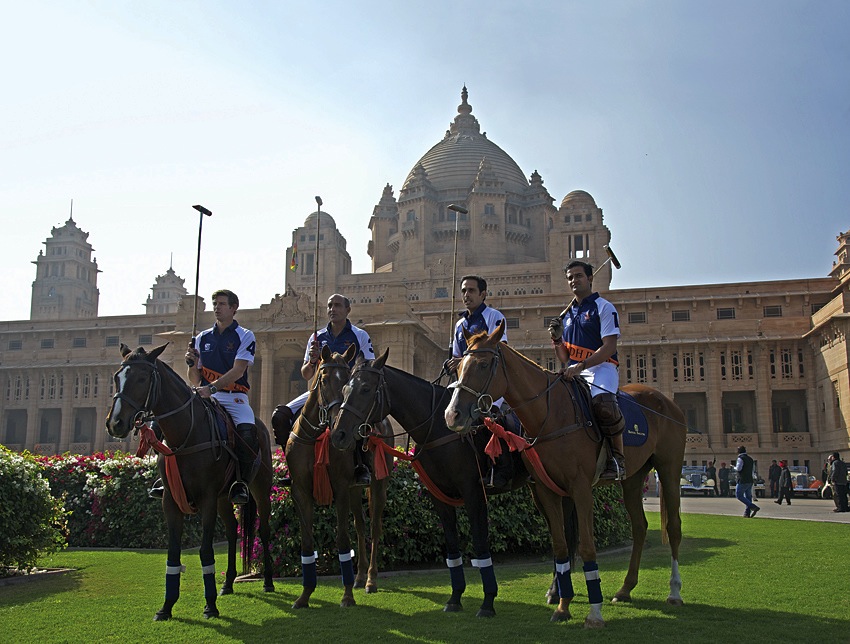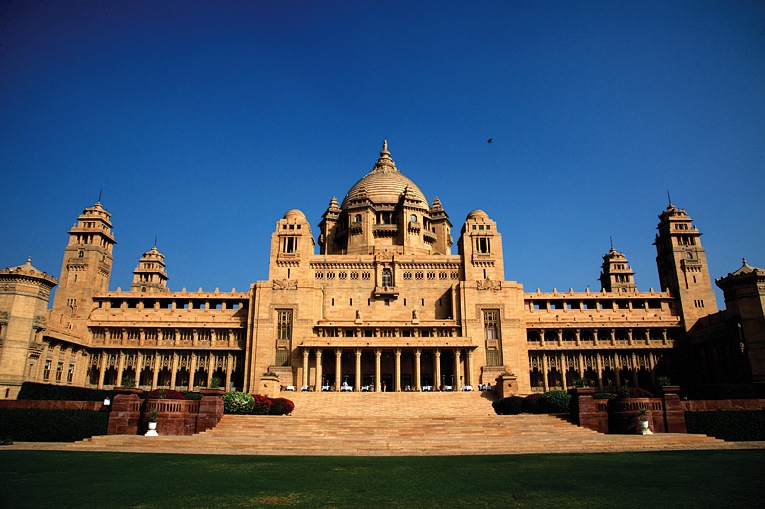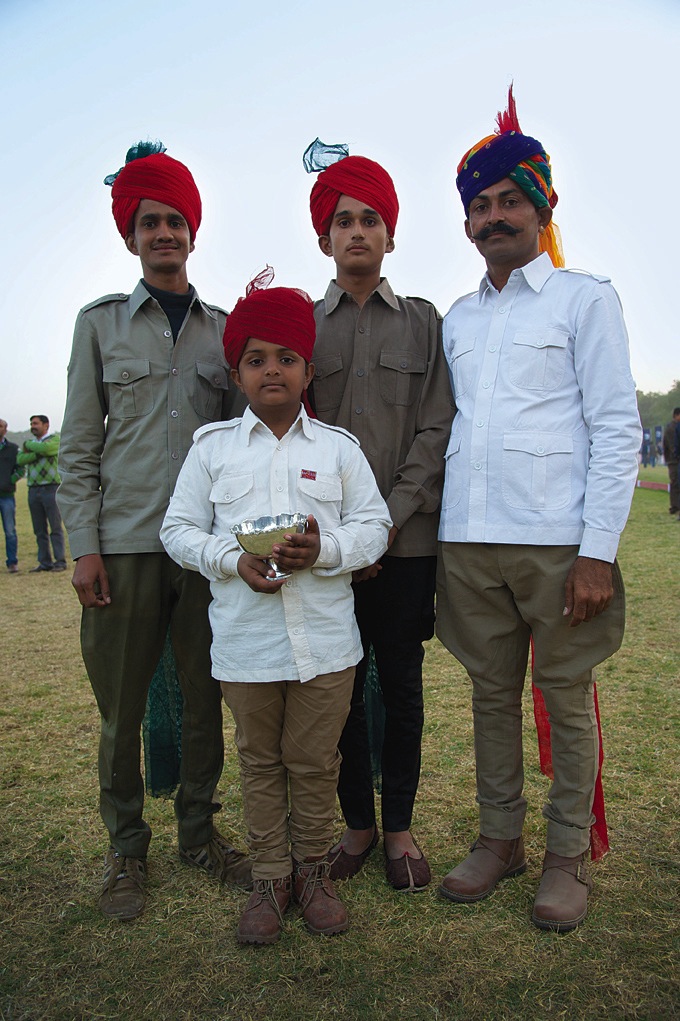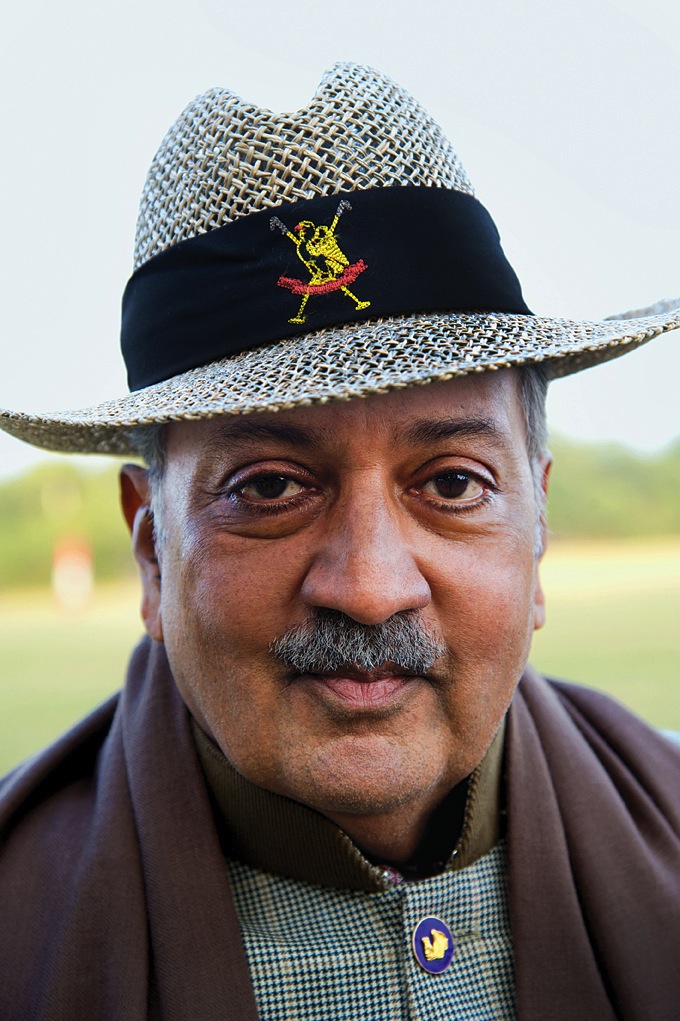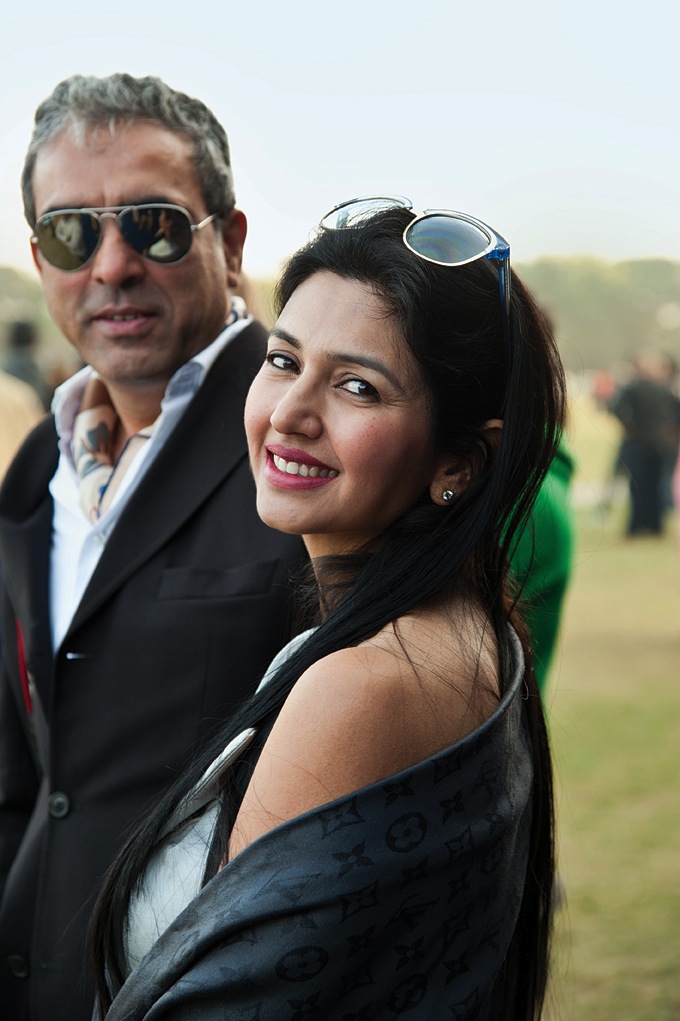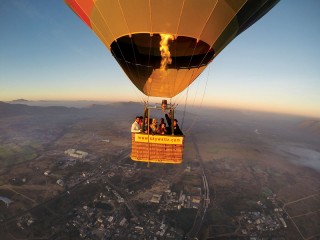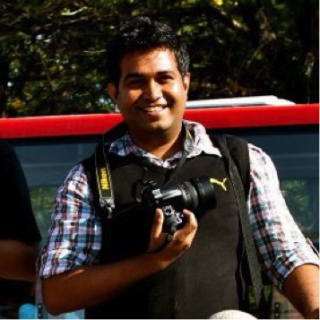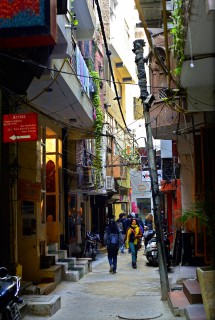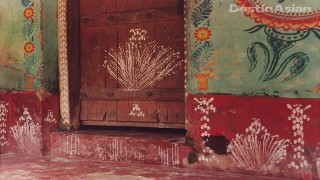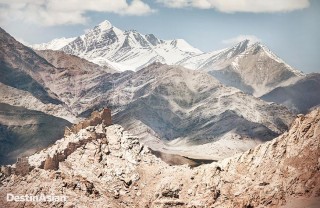Before coming here, I’d harbored thoughts that polo was an excuse for devilishly handsome men with floppy hair, sun-bronzed cheeks, and unnecessarily tight white trousers —to say nothing of their catwalk-ready wives and girlfriends—to prance around on silky horses for a bit of highfalutin exercise. What I hadn’t factored in was the agility, strength, technique, coordination, and stamina required by the sport. Polo is beautiful, but brutal: the sight and thundering sound of two players chasing down a ball on horses galloping at 50 kilometers per hour, their ponies’ midriffs crashing together, jostling for dominance, is breathtaking and terrifying.
The semi-final matches pitted outsiders IP Bedla (a team made up of graduates from Mayo College in Ajmer, 200 kilometers to the east; the maharaja calls it “the Eton of India”) against Malcolm Borwick’s Royal Salute, and Sahara Warriors against Central Academy. I took my seat on a comfy white-leather couch set on a terraced platform by the field. Behind us, the winter sun was sinking below the tops of the acacia and gulmohar trees, putting us in shade and chilling the air. A stray dog rolled around on the field. The crowd was surprisingly sober, with none of the rabble-rousing or bubbling chatter I usually encountered at sporting events. Out front, young Indian men in dark jeans and velvet jackets strutted around. Ponytailed European twentysomethings wearing Nehru jackets, kameezes, and churidars sauntered behind, followed by their mother, her blonde, frizzy mane a contrast to the simple red bindi on her forehead. Celebrity guests—Hong Kong’s Jennifer Tse; Bollywood couple Randeep Arya and Deepti Bhatnagar; the fabulously named Torquhil Ian Campbell, 13th Duke of Argyll—chatted with the local gentry. An Air India jet roared overhead. Behind me, an elderly Indian man was in deep discussion with a German woman gripping a monstrously long zoom lens, their conversation bouncing from the naval chief’s daughter to stud farms to flight delays. Old Indian gents in tweed caps, cravats, and Barbour jackets greeted each other. Then Shivraj Singh appeared from the left of the field, still debilitated from his 2005 injury. It was impossible not to be moved. His wife and daughter in tow, he walked haltingly and with considerable effort toward the maharaja, who em-braced his son warmly. The crowd applauded. “We’re very lucky,” a sari-clad woman behind me told her daughter. “He rarely comes to the field.”
The play alternated between frenetic activity and lulls when the whistle blew and players regrouped. Every now and then a horse limped off the field to be replaced by a fresh mount. Before the last two chukkas I walked to the opposite side of the field where the teams, trainers, and villagers watched, seated on the grass, the sun peeping into their eyes. The atmosphere here was completely different, with a steady chorus of cheering and cursing and tut-tutting. “Ahh, he cut him off!” one trainer shouted, slapping his thigh with his hand while slamming his foot into the dusty ground.
After the matches, while the well-heeled among us snacked on finger sandwiches, samosas, and tea, I snuck out to explore the Blue City. At a grimy corner teashop frequented by pot-bellied men and auto-rickshaw drivers, I emptied two cups of fragrant, milky chai scooped from a giant bubbling vat. At a diner-esque eatery called Gypsy, I scarfed down renditions of the street foods pani puri (crispy orbs of semolina shells filled with spiced potatoes and tamarind water) and pav bhaji (mashed vegetables scooped up with buttered buns). Making my way to Sardar Market, a busy square filled with shops and stalls and centered on a handsome brick clock tower, I walked past carts piled with second-hand T-shirts and trousers, boxes of incense, and mountains of fist-sized guavas to Bachhawat Arts. As the shop’s owner, who bore a striking resemblance to the goggle-eyed actor Steve Buscemi, pulled out piles of cotton, cashmere, and pashmina shawls, I told him it had been a dozen years since my last visit to Jodhpur. I also mentioned passing by Maha-rani Textiles, a cavernous textiles and handicrafts emporium near the Umaid Bhawan. “They will charge you three, four times my price. For same piece. Same quality.” I settled on a pashmina shawl, dark blue with a black sheen to it. “Come back next time you are in town, not in 12 years,” he implored. “And bring your friends!”
I thought about his invitation and how I could seriously see myself returning soon; Jodhpur has an unhurried ease to it. Maybe
I’d come for one of the city’s two big annual music festivals, October’s Jodhpur RIFF (Rajasthani International Folk Festival) or the World Sufi Spirit Festival in February, which pulls in artists from Azerbaijan, Iran, Leba-non, Morocco, and Tajikistan—an event that brings the world’s riches to Jodhpur, while exposing Jodhpur’s riches to the world.

